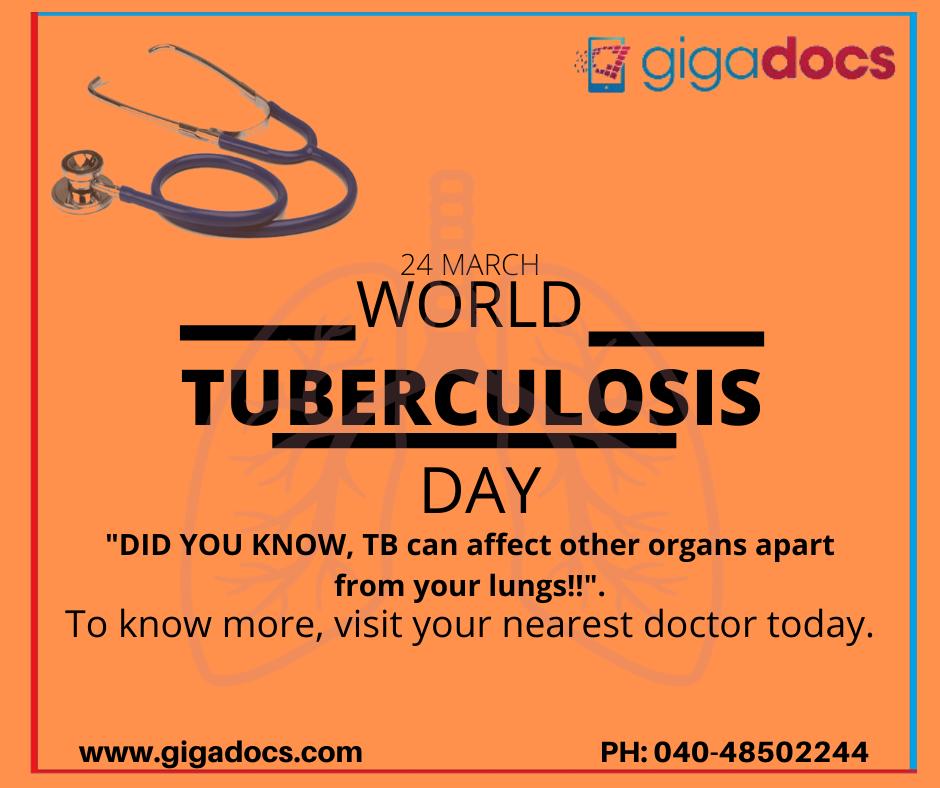Tuberculosis (TB) has infected every country of the world and is the leading cause of infectious death worldwide. Tuberculosis is a deadly airborne disease which affects the lungs and spreads when the carrier (infected person) coughs or sneezes.
As we enter a new decade, the disease is becoming difficult to treat and more deadly with growing resistance to available drugs. This means the number of infected cases continues to grow, with more than half a million cases of drug-resistant TB reported in 2019.
Do you that Tuberculosis infects the lungs but can exist in any organ of the body? Tuberculosis carriers can transmit “active” TB by sneezing and releasing the TB bacteria in the air. If you thought that one carries TB only if they show the sighs, then you are wrong.
You will be surprised to know that many people are also infected with latent TB or inactive TB, known to devastate communities and lead to a cycle of poverty and illness which grips families, societies, communities and even entire regions. The most vulnerable include those infected with HIV/AIDS, women and children.
Affecting the Global Population
Tuberculosis or TB is a contagious infection attacking the lungs, and slowly affecting the entire body like the spine and in worst cases the brain. Tuberculosis (TB) is caused by Mycobacterium tuberculosis which belongs to the bacteria family. Though Tuberculosis is curable and preventable, yet it is the leading cause of deaths worldwide.
According to the estimates by the World Health Organisation, 30 high TB burden countries reported 87% of new TB cases in 2018. India leads this count followed by eight countries which account for two-thirds of the total. These countries include China, the Philippines, South Africa, Pakistan, Nigeria, Bangladesh and Indonesia.
Air-bourne Spread
Tuberculosis is spread when an infected person with lung TB propels the tuberculosis bacteria into the air by his/ her coughs, sneezes or spits. A healthy person just needs to inhale only a few of these tuberculosis bacteria germs to become infected with the deadly tuberculosis symptoms. People must reach out to a medical specialist if they experience these early warning signs of TB symptoms-
- Fever, Chills, Chest pains or Night sweats.
- Persistent cough from 3 weeks.
- Being unwell with a feeling of fatigue.
- Swelling in the neck.
- Blood in their phlegm, when they cough.
- Loss of appetite and weight.
Tuberculosis can affect your joints, leading to a pain which feels like arthritis. If TB affects your bladder, you may experience blood in your urine while hurting while you pee. Tuberculosis of the spine may lead to back pain and in worst case leg paralysis. TB when attacks the brain can cause nausea and headaches.
Types of TB
Tuberculosis is a silent killer, based on symptoms, a person with TB bacteria becomes actively sick or can acquire a latent TB infection. There are two TB-related conditions which exist Latent TB infection (LTBI) and Active TB.
Active TB
Active TB attacks when the body is unable to contain the TB bacteria. Active TB is more common when the immune system weakens due to illness or with the intake of certain medications. In the event of an Active TB, the tuberculosis bacteria can replicate and cause symptoms causing active TB. Active TB Infected people with active TB can spread the infection.
Do you know that about one-quarter of the world’s population has latent TB? Infected people carry the TB infection but are not (yet) ill with the tuberculosis symptoms, making it more deadly.
The symptoms of an active TB include fever, cough, weight loss or night sweat. These TB symptoms may be mild for many months which can lead to considerable delays in medical aid and care, subsequently resulting in the mass transmission of the bacteria to others.
Carriers of active TB can infect 5–15 other people over one-year through close contact. Without proper medical aid, it is estimated that nearly all HIV-positive people with TB and 45% of HIV-negative people with TB on an average will die.
Latent or Inactive TB
In the event of a Latent TB infection, the bacteria are present in the body though not making the infected sick or contagious. In the case of a Latent TB case, the immune system protects the body from the infection resulting in the carrier not able to spread the disease.
Do you know who are more likely to be infected with the Tuberculosis bacterial infection?
- People with HIV/AIDS
- IV drug users
- Those who meet infected individuals
- Health care workers treating patients with a high risk of TB infection
Living with tuberculosis
If you have active TB disease, take precautions, as it will take several weeks of treatment before it is no longer contagious. Until then, follow what your doctor says so that you do not spread the tuberculosis bacteria. Follow these pointers-
- Take your medicine exactly as prescribed by the doctor.
- Cover your mouth with a handkerchief, or a tissue every-time you cough or sneeze. Dispose the tissue, handkerchief in a closed bag before throwing it away.
- Self-isolate and avoid close contact with other people.
- Follow sleeping alone and air out the room frequently so the bacteria does not stay in the room.
- Do not go back to work or school until your medical specialist says so.
An immediate medical attention is required, if one develops the more deadly active TB tuberculosis symptoms. They may need to be closely monitored medically for the rest of their lives. Close monitoring includes regular check-ups and chest X-rays done to make sure the carriers stay free of TB disease, even after they have taken the full course of tuberculosis medicine and followed all precautions.
When to see a doctor
Reach out to your doctor if you have a persistent cough, unexplained weight loss, fever, or drenching night sweats. These are the signs of Tuberculosis symptoms. Be careful Tuberculosis may also result from other pre-existing medical problems.
Book an appointment with specialist doctors at a time coinvent to you from the Gigadocs app, an intelligent practice management software that helps you book doctors around you. With the Gigadocs app, you can track your vitals and to share them with your specialist medical practitioner on a real-time basis.
Your doctor can perform tests to help determine the cause and the severity of the Tuberculosis bacterial infection.
What questions you must ask your Doctor?
- What re the symptoms of tuberculosis?
- What treatment is the best for active / latent Tuberculosis?
- How does one develop active tuberculosis?
- What should be done, when TB symptoms get worse?
- Is it safe for an infectant to be around their family?
- Is there anything that can be done to make the cough go away?
- Which medicines are safe to take with tuberculosis medicines?
- How often to seek a follow-up appointment?
- Can active/ latent tuberculosis ever be cured?
Celebrating World TB Day
To spread awareness about the deadly TB infection and the types of tuberculosis, World TB Day is recognised on March 24. This date marks the discovery of the bacterium that causes TB way back in 1882 by Dr Robert Koch. This historic date paved way towards diagnosing and curing the tuberculosis infection.
Download Gigadocs app-
IOS App – apple.co/2W2iG4V
Andriod App – bit.ly/33AQoRC
To know more e-mail, at info@gigadocs.com.
Gigadocs wishes you healthy wellbeing!




